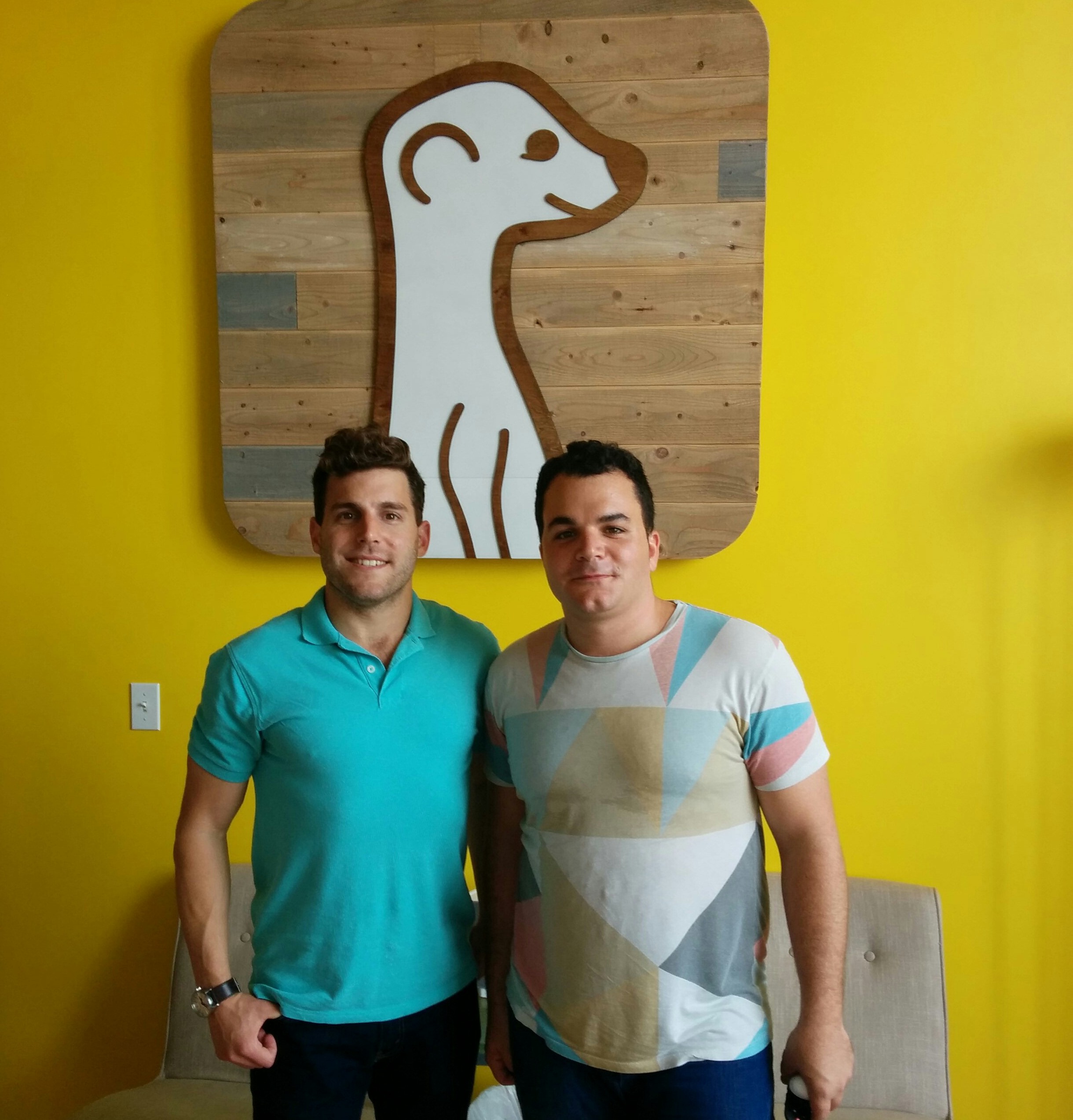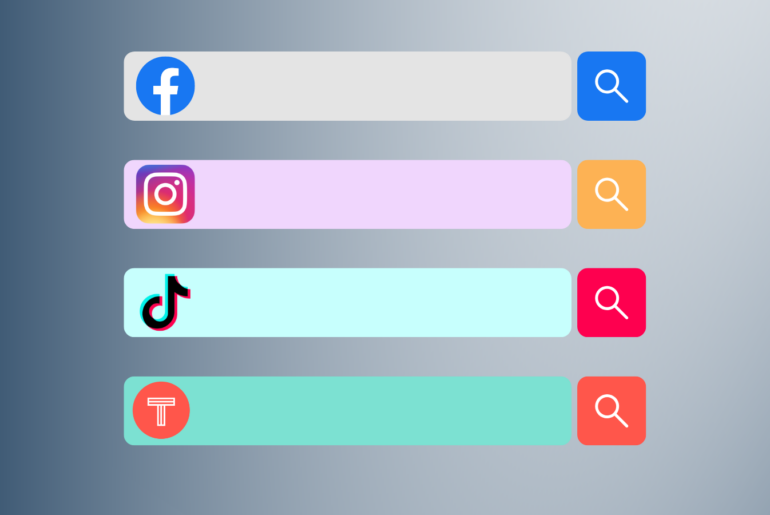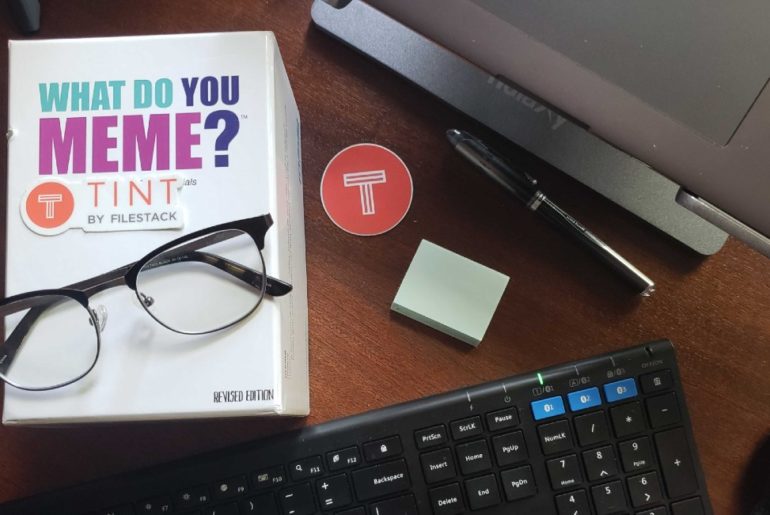Social Studies Podcast is a talk show produced by TINT about marketing, social media, and technology through the lens of the industry’s most innovative minds. Hosted by Nathan Zaru (@YES). In this episode we welcomeBen Rubin, founder and CEO of Meerkat. You can find him on twitter at @Benrbn and tweet us with comments and requests @TINT.
Nathan Zaru: Hello, welcome to another episode of the Social Studies Podcast. Today, my guest is Ben Rubin, founder and CEO of Meerkat. Ben, welcome to Social Studies.
Nathan Zaru: thanks for having me.
Nathan Zaru: Stoked to be here, Ben. I’m sitting right now in Meerkat HQ and I think it’s fair to see I’m seeing a lot of yellow right now.
Ben Rubin: Yeah, a lot of yellow.
Nathan Zaru: Before you get into it, I’m curious, I never actually asked you what did Meerkat inspiration for the name and the logo come from?
Ben Rubin: Goes back to … In the company, we run a lot of experiment in live video and we got to the point when we had a lot of insight stuff that we learned from the former product called Yevvo. There was like six different use cases that we saw. For each of them, we said we’re going to build a simple product for each of them. One of them, we thought about we’re going to do like six different types of live video platforms.
Nathan Zaru: Six different types?
Ben Rubin: Yes. Somebody thought about like my co-founder, Uri thought about the animal, meerkat. He was like, “It’s fun to do, for one of those six, to do like this animal. It’s like the most social animal in the world.”
Nathan Zaru: It’s the most social animal in the world?
Ben Rubin: I think, yes. It’s the most social. I’m not sure if dolphins, maybe only like-
Nathan Zaru: They have social intelligence, but they’re not socializing.
Ben Rubin: Yes. Meerkats like they put in their hands on each other. They’re chilling. They’re very advanced, man.
Nathan Zaru: Most definitely. I think the logo is so critical and so huge because I think people miss the point of having a logo. Yours if I describe it is bold. It’s distinct. It’s two colors, three colors. You could see it from a mile away, right?
Ben Rubin: Yes.
Nathan Zaru: Was that intentional?
Ben Rubin: Yes. Jacob, who’s the designer, as he just like he thought about the concept of Meerkat, and then he likes the simple stuff and large strokes.
Nathan Zaru: Simple stuff and large strokes.
Ben Rubin: Strokes, yes. Which is kind of a trend now in design anyways. He likes that and he just made one for Meerkat. It was awesome.
Nathan Zaru: I just think it’s so awesome people wear Meerkat shirts and they look cool, they look trendy. They look like something you’d buy in an urban outfit or something like that. Right?
Ben Rubin: I wouldn’t go that far.
Nathan Zaru: Well, I don’t mean that far. I would personally wear one, but how many boring tech app logos do you see on shirts that you wouldn’t touch? You know?
Ben Rubin: I don’t like to call other products boring.
Nathan Zaru: Fair point, fair point.
Ben Rubin: But you see different … Every product has it’s own luck, I think.
Nathan Zaru: It’s own luck. What do you mean by that?
Ben Rubin: It’s like you think something is cool, but you’re lucky if the masses think it’s cool, too. Right? It’s like a song. When you write a song, it sounds good in the studio. I’m not a singer or something-
Nathan Zaru: Not yet.
Ben Rubin: But it’s like sometimes the harmony and the melody and the right keys just like everything takes the right order and you have it. Right? That’s something that you can feel that it’s great, but making it a hit and the impact of it is luck because you cannot … If you bring a hundred people here, I think if something is cool, I’ll be lucky if 80% of them think it’s cool also. Right? You cannot control … The only way to control your luck is by trying more and more and more and more. Like you see some artists in music, they’re working and working and working until they break and then they’re working more and more… Look at Drake. Look at Kanye.
Nathan Zaru: Sure. To control your luck, try more.
Ben Rubin: Try. I didn’t say it first. I think it’s … Some famous person said, “The more I work, the more I get lucky.”
Nathan Zaru: The more I work of my luck. I like that. I want to bring that out because it’s-
Ben Rubin: I didn’t say it.
Nathan Zaru: No, not yet. It’s a nice segue, though because I think a lot of people see Meerkat as like this sensation and i think it’s great, obviously. We can talk about the whole history at South by Southwest. But it’s much more than that. Yevvo, that’s how I first encountered you guys. Yevvo was something before Meerkat. Do you want to talk about the history that people don’t know about?
Ben Rubin: Yes. We’re working in this place for like three years now, almost three years. Actually started around this time of the year three years ago. We started as a product called Yevvo which was live streaming that we want to stream on Twitter also. You could have streamed on Twitter, but that’s was not the goal of the platform. It was like come, build your audience, search people. It was a very complicated product, I think. We started working on it on this time three years ago. We released it like a year after, like the full blown version.
Nathan Zaru: Meerkat version–
Ben Rubin: Sarah Perez was the first to write about our company.
Nathan Zaru: Two years ago?
Ben Rubin: Two years ago exactly, she wrote about on August 8th.
Nathan Zaru: Meerkat was older from, Yevvo has been alive for more than two years at this point.
Ben Rubin: Yeah. It’s still like the … the mobile-to-mobile live video platform with the highest concurrent watcher ever.
Nathan Zaru: Really?
Ben Rubin: Yeah.
Nathan Zaru: Interesting.
Ben Rubin: Yevvo.
Nathan Zaru: Yeah, Yevvo. And so, what was-
Ben Rubin: More than like than any other.
Nathan Zaru: Right. To this day, to this day. You’re on to something at Yevvo, but Yevvo is not Meerkat. Right? What’s the key difference and like what was the key insight you learned from Yevvo that lead you to Meerkat?
Ben Rubin: We saw a lot of use cases in Yevvo. Nothing was sticky because the product was trying to do too much and was not focused on doing one simple thing good. There was the idea of streaming on Twitter because we saw people were using Yevvo in like a Lady Gaga show with the right hashtag. Suddenly, we saw a superfan pick it up and then they were within it like crazy and you get to a thousand watchers. For somebody like with no followers, just because they tweet it. In Yevvo, it could tweet the live video, so that was funny. That was one use case — live streaming to Twitter. The other one is live streaming to your friends. Another one was live video.
Nathan Zaru: live video.
Ben Rubin: live video like by categories and having people like go into a category and have a discussion there.
Nathan Zaru: This is all under Yevvo property at the time?
Ben Rubin: No, we didn’t build all of this.
Nathan Zaru: I see, I see, I see.
Ben Rubin: Like Yik Yak of live video and there was another two. Yeah.
Nathan Zaru: It’s come a long way and Meerkat is huge now at least as far as consumer apps go. I think a lot of people look at the history of Meerkat and Periscope is looking like Meerkat versus Periscope. But yours are playing different games and doing different things. Do you want to talk about that?
Ben Rubin: Yes. I’ll talk about Meerkat like the way we look at ourselves, the analogy between theater and house party.
Nathan Zaru: Theater and house party.
Ben Rubin: Yes. We’re not a theater. The experience that we want you to have is not like come and watch stuff live and just lean back and just [inaudible 00:08:16]. We want a lean, mean experience. We want an house party experience. Obviously, if people want to experience that is the theater. There is huge need for that and there are and there would be great platform for that. We try to be the best house party experience. For example, we just launched “Show and Tell” which is basically allowing the broadcaster to connect to their camera roll and showing pictures from their camera roll to audience, so you can just peak like, so you if you want to go live and talk about yesterday and went out with your friends. You can go live and you can just go into your camera roll and start talking about like, “Oh, yesterday we did that. We did that. Here’s my friend, Brian. Here’s my friend, [Tim 00:09:07]. This is my boss. This is my friend.” This sharing like a picture from your camera roll.
The other thing that we did is [live polling 00:09:16] so you can ask your audience to vote yes or no on a topic. That ties to a whole house party agenda that started with Cameo that you actually led a watcher. You can invite them to take over your streams and stream on your behalf. Not on your behalf, but just like while you’re streaming and take over and say for 60 seconds. You can talk to your audience. It’s all about how do we get the audience involved in the content in the most human way possible.
Nathan Zaru: Getting the audience involved to the content with the most human way possible.
Ben Rubin: Yeah.
Nathan Zaru: Interesting. I look at Meerkat as a social app. Roughly speaking, is that social media, right? This industry we’re in and a lot of social apps have a boom-and-bust kind of thing. They become fads and sometimes people lose interest, right? How do you defend against that? How do you always stay relevant. Is it through [inaudible 00:10:16] watching these features you’re talking about or something deeper than that?
Ben Rubin: I think it’s a combination of the team mindset of experimentation, messaging outside to the community, and to people that look at you and also constantly innovating. Cameo is a big feature, right? There’s no other app out there. There’s no other platform out there. There is no other service that lets the audience take over a stream. There is now.
Nathan Zaru: There is now.
Ben Rubin: It’s like a unique experience to stream and then suddenly somebody is taking over your stream. I don’t know about polling. But polling or sharing your camera roll or the fact that the audience is there and you can press on their faces and see their name and talk to them. We’re going to continue and have this mindset of bringing the audience in and as long as it making sense to our community and to new users to our team, that it’s a really different experience. I think that it will not be a fad.
Nathan Zaru: I feel that that’s a really good answer and I think maybe along those lines, I love this example. I just think you guys should get an award for one of the best marketing moves of the year, the GoPro integration. Can you talk about how you facilitated that and what you see is the future being there?
Ben Rubin: Basically, the GoPro integration is something we did ourselves. There was no official partnership with GoPro.
Nathan Zaru: Really?
Ben Rubin: We just figured out how to … The GoPro camera has a WiFi and that can transmit to your app, to your GoPro app. Basically, we figured out a way to take this transmit to our app and just make it happen.
Nathan Zaru: People using it?
Ben Rubin: I think it’s too hidden right now. We’re going to solve it. We’re going to move it to something that is less hidden.
Nathan Zaru: That’s awesome. Just bringing together two awesome platforms, GoPro and Meerkat. I’m curious to get your perspective before we conclude and this social media’s ever changing environment. We’re just trying to innovate as we’re talking about just now. What’s next? For Meerkat or for this industry [inaudible 00:12:42]? What do you think is going to be? What do you think will surprise everyone in 2016 just like how live streaming surprised everyone in 2015?
Ben Rubin: I think there is more. There’s at least three to four big bangs in live video.
Nathan Zaru: Oh, boy. Really?
Ben Rubin: I think it’s this deep participation of the audience that it’s interesting. How do you mimic real world interaction to virtual space. I’m excited for that. I’m very excited.
Nathan Zaru: I am, too. Ben, thanks for teaching us how to be the best house party. Thanks for coming on Social Studies podcast.
Ben Rubin: Thank you.




